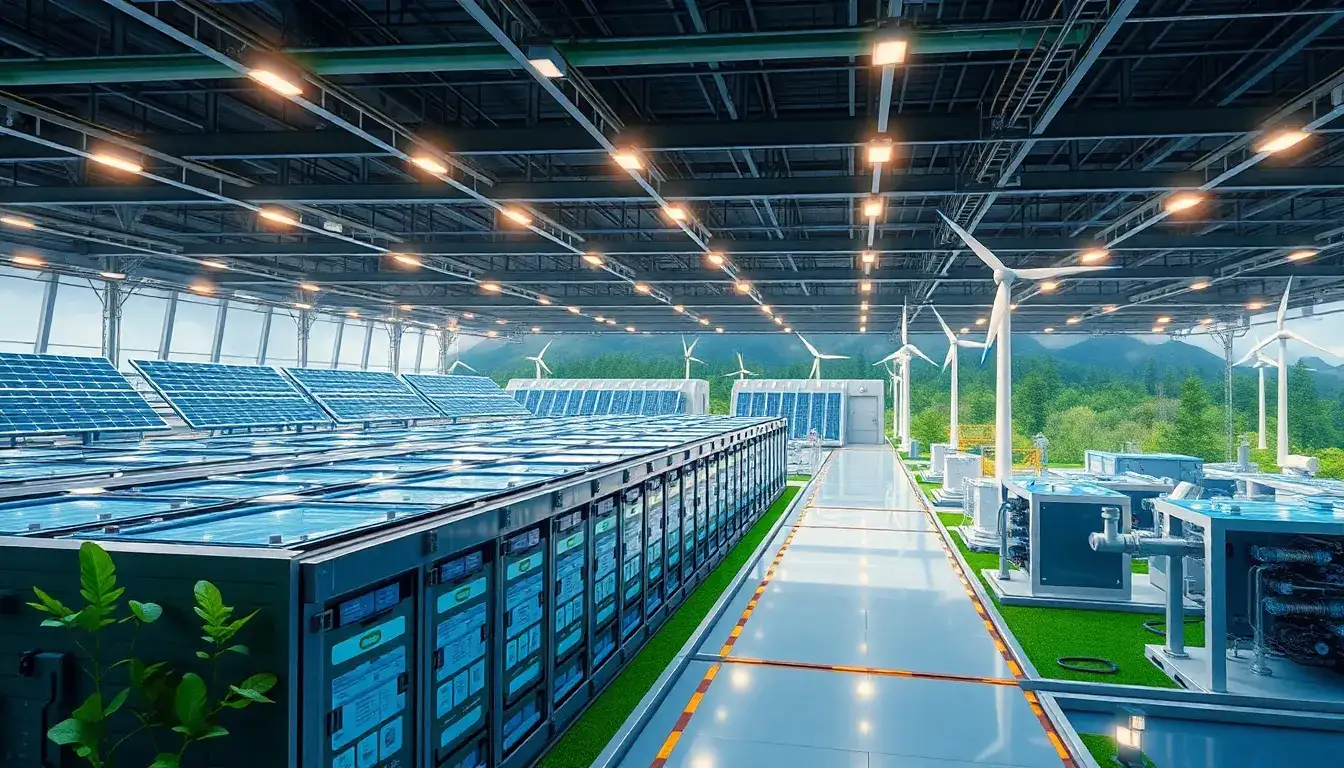
Battery storage is essential for the Baltics as they transition from Russia’s BRELL grid to the Continental European grid. This change coincided with Lithuania’s introduction of a €100 million storage support initiative.
In Australia, the Australian Energy Market Operator (AEMO) reported a 97% increase in Battery Energy Storage System (BESS) applications in the National Electricity Market (NEM) year-on-year for the fourth quarter of 2024. Gold Green Energy has received approval for a 400MWh solar-plus-BESS project, while AEMO has seen 18.1GW of BESS applications for connections to the NEM.
Fluence has downgraded its 2025 revenue expectations due to delays in contracts and increased competition, although it maintains that global demand for battery storage remains strong. Meanwhile, Freyr, a company listed on the NYSE, has canceled plans for a battery manufacturing facility in Georgia, USA, as it shifts its focus towards solar energy in the United States.
Virtual Power Plants (VPPs) are emerging as networks of small-scale, distributed energy resources, including solar panels and batteries, that operate collectively to provide stability to the electric grid. This innovation is being explored in the US, Canada, and Germany as a means to add value for customers and the grid.
In Italy, the energy storage market presents unique opportunities for risk-averse investment funds, according to a director at Timera Energy. However, competitive upcoming auctions may drive down clearing prices, making it critical for investors to strategize effectively.
In a significant development, BYD has secured a substantial 12.5GWh contract with the Saudi Electricity Company, which serves as the state utility and transmission and distribution system operator in Saudi Arabia.
Germany has been recognized as the most promising energy storage market in Europe from a development standpoint, according to battery storage developer-investor BW ESS.
Queensland Hydro is moving forward with its 48GWh pumped hydro energy storage (PHES) project despite governmental concerns regarding its feasibility. In New South Wales, the state government has allocated AU$1 billion for energy storage projects through its Energy Security Corporation.
Luma Energy, a joint venture between US and Canadian firms responsible for Puerto Rico’s electricity distribution network, will construct nine energy interconnection points in partnership with Linxon US LLC and AtkinsRéalis Caribe to integrate renewable energy projects.
In January 2025, nearly 14GWh of grid-scale BESS capacity was installed globally, with over two-thirds of this capacity located in China. Additionally, Fluence has introduced a new AC-based modular battery storage platform, which is expected to deliver industry-leading energy density.
The Nature Conservancy, in collaboration with Sun Tribe and ENGIE, plans to deploy solar and battery storage systems at former coal mine sites in the Appalachian region of the United States. Energy Vault has also been selected by Victoria’s State Electricity Commission to provide a 100MW/200MWh government-owned battery energy storage system.
Australia’s Clean Energy Council reported a robust year for energy storage in 2024, with a total capacity of 4,029MW/11,348MWh reaching financial commitment.
The growing importance of energy storage is evident in various markets worldwide, and as technology continues to evolve, opportunities for innovation and investment remain abundant.
Original article by NenPower, If reposted, please credit the source: https://nenpower.com/blog/advancements-in-energy-storage-key-developments-and-market-trends/


